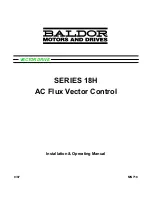
PDSSAP 20-Li A1
GB
│
MT
│
47
■
4. Power tool use and care
a)
Do not force the power tool. Use the correct
power tool for your application.
The correct
power tool will do the job better and safer at the
rate for which it was designed.
b)
Do not use the power tool if the switch does
not turn it on and off.
Any power tool that
cannot be controlled with the switch is
dangerous and must be repaired.
c)
Disconnect the plug from the power source
and/or remove the battery pack, if detach-
able, from the power tool before making any
adjustments, changing accessories, or storing
power tools.
Such preventive safety measures
reduce the risk of starting the power tool acci-
dentally.
d)
Store idle power tools out of the reach of chil-
dren and do not allow persons unfamiliar
with the power tool or these instructions to
operate the power tool.
Power tools are
dangerous in the hands of untrained users.
e)
Maintain power tools and accessories. Check
for misalignment or binding of moving parts,
breakage of parts and any other condition
that may affect the power tool’s operation. If
damaged, have the power tool repaired
before use.
Many accidents are caused by
poorly maintained power tools.
f)
Keep cutting tools sharp and clean.
Properly
maintained cutting tools with sharp cutting
edges are less likely to bind and are easier to
control.
g)
Use the power tool, accessories and acces-
sory tools etc. in accordance with these
instructions, taking into account the working
conditions and the work to be performed.
Using power tools for operations different from
those intended can result in hazardous situa-
tions.
h)
Keep handles and grasping surfaces dry,
clean and free from oil and grease.
Slippery
handles and grasping surfaces do not allow for
safe handling and control of the tool in unex-
pected situations.
5. Use and handling of the cordless
electrical power tool
a)
Charge a rechargeable battery using only
the charger recommended by the manufac-
turer.
Chargers are often designed for a partic-
ular type of rechargeable battery unit. There is
a risk of fire if other types of rechargeable
battery units are used.
b)
Only the rechargeable battery units supplied
are to be used with an electrical power tool.
The use of other rechargeable battery units may
lead to the danger of injury or fire.
c)
When they are not being used, store
rechargeable battery units away from paper-
clips, coins, keys, nails, screws or other small
metal objects that could cause the contacts to
be bridged.
Short-circuiting the contacts of a
rechargeable battery unit may result in heat
damage or fire.
d)
Fluids may leak out of rechargeable battery
units if they are misused. If this happens,
avoid contact with the fluid. If contact occurs,
flush the affected area with water. Seek addi-
tional medical help if any of the fluid gets into
your eyes.
Escaping battery fluid may cause
skin irritation or burns.
e)
Do not use a damaged or modified battery.
Damaged or modified batteries may behave
unexpectedly and cause fires, explosions or
pose a risk of injury.
f)
Do not expose a battery to fire or excessively
high temperatures.
Fire or temperatures in
excess of 130°C (265°F) can cause an explo-
sion.
g)
Follow all instructions regarding charging
and never charge the battery or the cordless
tool outside of the temperature range given in
the operating instructions.
Incorrect charging
or charging outside of the permissible tempera-
ture range can destroy the battery and increase
the risk of fire.
IB_329780_PDSSAP20-LiA1_LB5.indb 47
07.08.20 13:57
Содержание PDSSAP 20-Li A1
Страница 3: ...A 1a...
Страница 18: ...PDSSAP 20 Li A1 14 ES...
Страница 32: ...PDSSAP 20 Li A1 28 IT MT...
Страница 46: ...PDSSAP 20 Li A1 42 PT...
Страница 60: ...PDSSAP 20 Li A1 56 GB MT...
Страница 74: ...PDSSAP 20 Li A1 70 DE AT CH...
















































